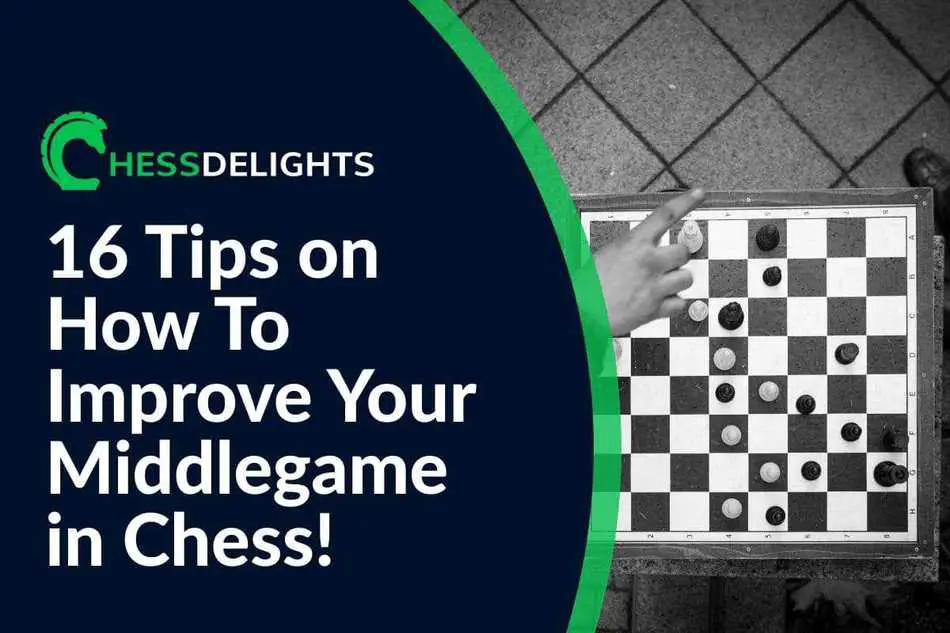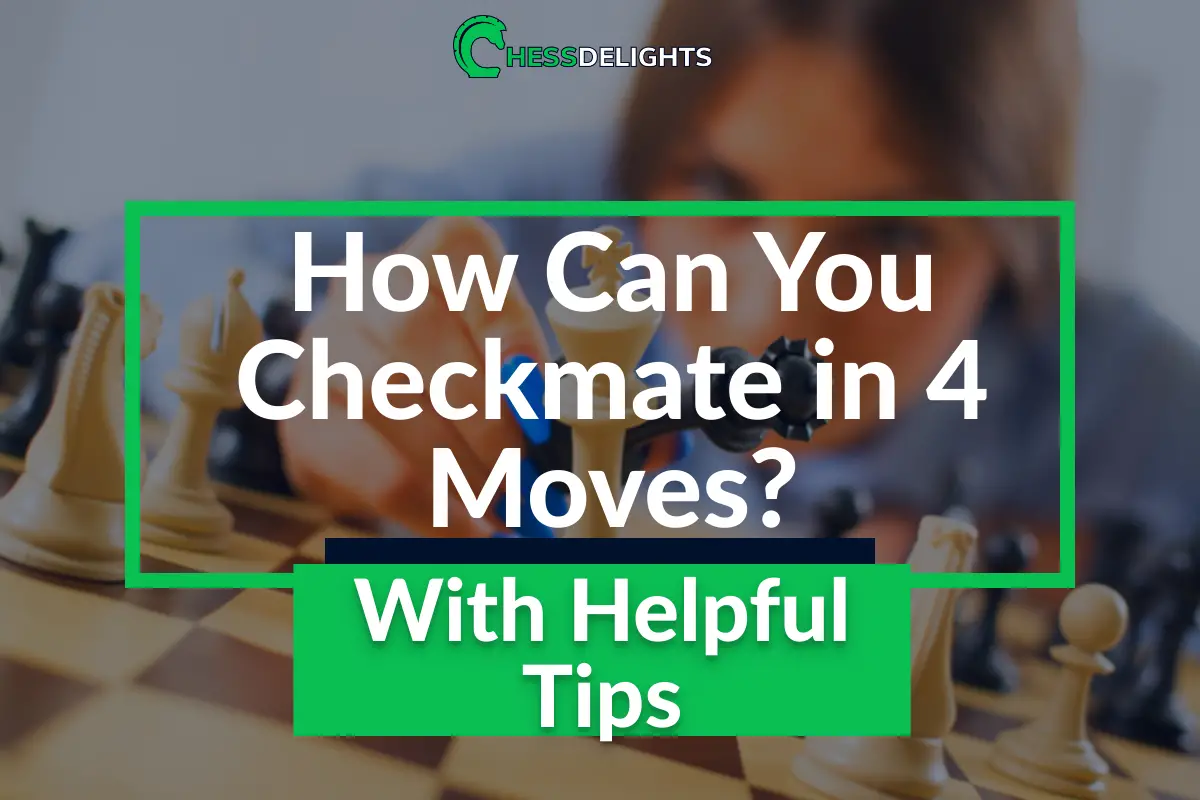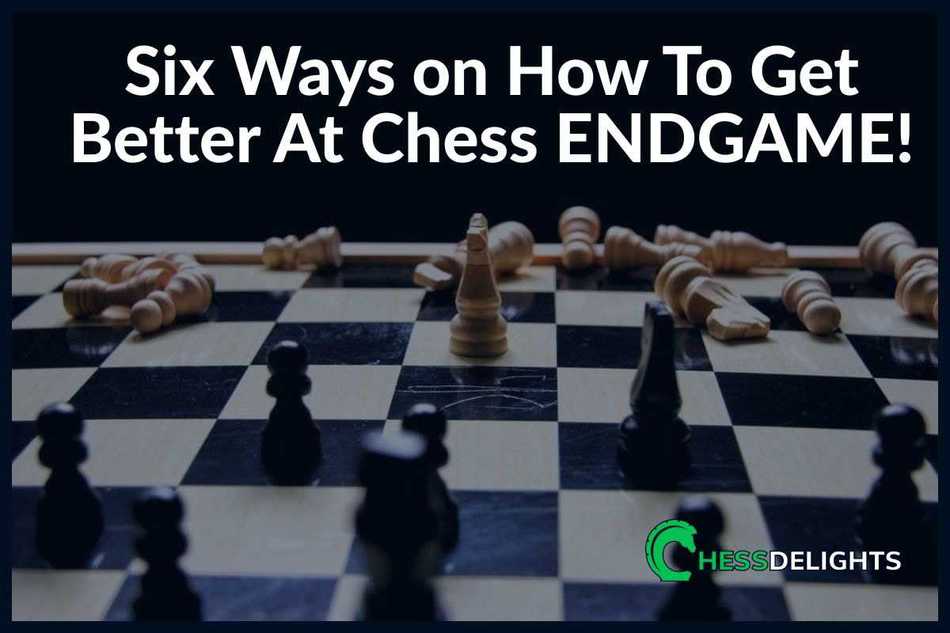Middle game in chess is it important? Can you improve your chess skills in the middle game? I started with no real basics of chess, and I play as hard as I can to win every game – and I know some of you can relate with me.
It will be difficult for beginners to master every aspect of the chess game (openings, middle game, end game) but what we need to do is learn bits and pieces of each element.
I don't put all of my efforts in studying end games, but I do try to learn middle game strategies as much as I can. The most chess game can end in the middle game – that's why I wanted to teach my daughter the importance of learning and to improve her middle game in chess.
I gave my best to summarize the tips in this article through researching and reading popular articles about middle game topics and here are the tips that I came up with.
Table of Contents
1. Know you are playing in the middle game
Do you know if you are playing in the middle game of chess already? There's some confusion about this, and I get confused myself too… 🙂
So, I searched the internet and looked at what some chess experts opinions (there are not many people talking about this) and what they are saying and I found out that if your Rook has connected with your King that's when you know you are playing in the middle game.
Or… If all your minor chess pieces have been developed, then we can say that we are playing middle game chess.
It's vital that we know which part of the game we are playing to successfully implement some of the tips and tactics we are about to learn in this article.
Recommended Reading: If you want to learn more about chess strategies, read this article.
2. Know how to Identify if you are playing an Open Position or a Closed Position
Analyzing pawn structures will help you determine if you are playing in an open position or closed position.
If you are a beginner you might struggle to understand about an open position and closed position, I hope the below ideas can help you identify an open and closed position in your game.
Here are some ideas to find out if you are playing in an open position:
- There are fewer pawn chains
- 3 or more pawn islands
- More than two pawns have already been traded
- Fewer pawns are blocking the squares
When you noticed any of the three listed ideas above – you should immediately know that you are playing in an Open Position. However, in a Closed Position, it's a complete opposite, and you identify it by the following ideas:
- More pawn chains in a game
- There are only at least two pawn islands
- Less than two pawns have been traded or none at all
- Pawns are blocking most of the squares
The ideas above can quickly help you identify a Closed Position in a chess game. Now, that you understand how to recognize Open Position or Closed Position in a chess game…
Next is, you need to learn what minor chess pieces effectively plays well in an Open or Closed Position.
3. Play with this minor chess pieces in an Open Position
Open Position means there are a lot of open squares to move your minor chess pieces.
But not all minor chess pieces are effective in an Open Position.
The chess experts recommend that when you identify an Open Position during a game – you need to have a solid and useful Bishop. Bishop is very active in an Open Position, mainly because there are diagonal squares that your Bishop can maneuver into (which is always good).
Pawns are less, and also fewer squares are blocked or occupied by a chess piece. Don't forget when playing an Open Position; use your Bishop effectively.
4. Play with this minor chess pieces in a Closed Position
When it comes to a Closed Position – You need to have your Knight working for you. Knights are much more effective in a Closed Position because they can jump over chess pieces and occupy a square.
Since a Closed Position means that most of the squares are blocked by either pawns or other chess pieces, Knight is an excellent material to have in middle games.
Don't forget to play effectively with Closed Position you should have a Knight with you.
5. Find good and common Pin tactics
You would most likely have seen a lot of pins in a chess game… 🙂
Pins happens when you try to capture a chess piece defended by a chess piece that cannot move. And the only chess pieces that can do the pinning are Bishop, Rooks, and Queen because they can move horizontally, vertically, and diagonally.
A common example is Bishop, Knight, and King. The Bishop is attacking the Knight which cannot (legally) move because the King will be under check if the Knight moves.
The Bishop created a pinning move, and the opponent's Knight is being pinned to it's King. You should learn to identify pins in a game that can help you win in the middle game.
6. Find good and common Skewers tactics
Skewers are similar to a pin but what happens is that the chess piece under direct attack is forced to move and the chess piece behind it will be captured.
Skewers commonly happen during the end game, and a good example is a Rook, King, and a Queen. The Rook created a skewer by checking the King and is forced to move to expose the Queen behind it.
The same with Pin, only Bishop, Rooks, and Queen can perform Skewers.
7. Find good and common Fork tactics
This tactic is found during a game where attacks happens with two of of your opponent's chess pieces simultaneously – and what happens is that one chess piece is about to be captured no matter what. Unlike Pins and Skewers, all chess pieces can execute a fork.
But… The most common chess piece that you may encounter using the Fork tactic is the Knight.
A good example is the Knight, King, and Queen. Knight Forks the King and Queen by checking the King and at the same time attacking the Queen. Learn about this tactic and try to avoid getting yourself into a Fork as well.
8. Combine Tactics with Sacrifices to gain advantage
I've seen great chess checkmates by using sacrifices… 🙂 Still, I am amazed up to now…lol! Sacrifices force you to think three or more moves ahead to end a chess game.
But… You can make sacrifices to turn it into different tactics like Pin, Skewers, and Forks in your game. Knowing the tactics above will help you execute a chess piece Sacrifice properly.
Practice combining tactics and sacrifices in the middle game.
9. Improve your knowledge in exchanging chess pieces
I was playing chess with my daughter, and she tried exchanging my Knight with her Rook, and I told her that my pawn is going to capture her Rook.
She exchanged her Knight with her Rook without any positional advantage or any threat to my King.
It's important to learn the right way to trade or exchange your chess pieces with your opponent. Here are some ideas to remember when exchanging chess pieces with your opponent:
- Avoid exchanging an active minor piece
- Trade bad chess piece with your opponent's good chess piece
- Trade when you are ahead of material
- Trade for positional advantage
Avoid exchanging an active minor piece; a good example is if you are playing in an open position and you have a Bishop that you know can maneuver in the board well, and your opponent has a minor piece that is not doing much in the board.
It is advised by chess experts to avoid accepting exchanges with those type of chess pieces.
Trade bad chess piece with your opponent's good chess piece; this is opposite of the first idea above, exchange your weak chess piece or not so useful chess piece with your opponent's strong or active chess piece.
But, there are certain chess pieces that you know are strong in white or black – like for example I seldom exchange my light squared Bishop when I'm white because of black's weakest pawn is in the light square and the same with Black's dark square Bishop because of white's weakest pawn in the dark square.
Trade, when you are ahead of material; simplifying the game, can lead to an early win for you. If you are ahead with two or three materials, you can simply exchange pieces with your opponent.
It's a great tactic especially in the middle game – you'll notice your opponent will avoid exchanging chess pieces because your opponent cannot afford losing more chess pieces (that only means your opponent knows it's about to lose the game).
Trade for positional advantage; if you know that you'll gain a positional advantage during an exchange then go for it. In the middle game, having your chess pieces in a good position will help you win the game in the end.
Try to identify trades or exchanges in your game that can lead to this and then execute.
10. Move your chess piece to an outpost
When I say, chess piece what I mean is your minor chess piece (Bishop, Knight or Rook). An excellent outpost is a place in the chess board that you can put your minor chess piece which will be difficult for your opponent to attack or defend.
A good example is a Knight and a Backward Pawn. Because the outpost normally occurs when your opponent has a backward pawn – and your minor chess piece that can be placed in the outpost is your Knight.
Identify excellent outpost during your game and placed a strong minor chess piece on it.
11. Avoid creating an outpost for your opponent
This time you should avoid creating outpost that your opponent can use in your game.
If you have created an outpost that can be occupied by your opponent you should be able to exchange your minor chess piece that is lesser value than your opponent.
For example, if your opponent occupied an outpost with their Knight, then a lesser value chess piece like a pawn or same minor chess piece like a Knight or Bishop should capture it.
If you don't have…
Then your opponent has successfully made a strong outpost for its minor chess piece. I know this cannot be avoided, but in the middle game strategy, this is helpful to keep in mind.
12. Learn unstoppable Pawn Queening tactics
Queening happens when your pawn reaches the 8th rank or the opposite side of the board. A passed pawn is a familiar term that I've learned where your pawn cannot be stopped in reaching the 8th rank and get promoted.
When you don't know how to properly execute this, you might lose your chance of getting your pawn in the 8th rank.
I've committed a lot of mistakes with my pawn Queening, and I ended up losing. It's good to learn tactics like this which will be very helpful to your middle game strategies.
Right now… I am learning tactics on how to identify pawns that can be promoted to Queen and pawn structures that can execute this well.
13. Avoid isolated pawns
So, speaking of pawn structures, isolated pawns are going to be problematic for you in the middle game. As much as possible avoid creating isolated pawns in your game or if you can't prevent it try to make sure it will not lead you losing the game.
Isolated pawns are identified as pawns with no adjacent or friendly pawns besides it (pawns that can protect it). It's a bad pawn structure and it been advised by chess experts to avoid having them in your game.
14. Memorize checkmate patterns
There's a checkmate pattern that is called a Fool's mate wherein White loses by checkmate in just two moves.
This can happen, only if your opponent doesn't know much about chess and if this series of blunders occur.
It's crucial to know mating or checkmate patterns, if in any case you have seen checkmate patterns during the middle game then definitely you are going to win. I encourage you to memorize at least 3 to 5 checkmate patterns to improve your middle game strategy.
Knowing some checkmate patterns will help you to move in a way that you can reach the same checkmate patterns even in a middle game.
15. Study 4 chess openings tactics you encounter in a daily basis and 2 chess opening tactics that is unfamiliar to you
It's exactly that, study 4 chess opening tactics which is familiar to you and 2 chess opening that is unfamiliar…
Why study unfamiliar moves? I don't like the feeling of being clueless whenever I play chess with an opponent who plays an unfamiliar chess opening with me… If you want to really improve your chess game, it's always better to learn 6 chess opening tactics. Three chess opening tactics each for White and Black.
Start with the two basic chess openings like White's pawn to e4, d4 and Black's pawn to e5,d5. Then one unfamiliar chess openings each for Black and White.
I know we are talking about middle game here…But if you have a poor chess opening tactics then it will be difficult for beginners to achieve a strong middle game strategies.
16. Pick up other helpful middle game tips
It's fun learning one tip from one Grandmaster or one other reliable source…
However, it's always a good idea to pick up more tips from other sources, and it's up to you to find out if the tactics are useful- How do you do that?
Well, we play out the tactic ourselves or watch in Youtube how this tactic can fail and how to avoid it. For me, It's not important who showed you the tactics or tips, but it's finding out if the tactics can work for you.
In this case, it's learning more tips to improve your middle game.
Wrapping Up
Learning about middle game strategies really helped me avoid problematic positions in chess games.
I always like to play with a lot of effort (unwanted stress) and really struggle not knowing some of the tips above, but when I finally decided to give some time to study or learn some of the tips above…
And I knew my game started to improve. Although, we cannot expect to start winning a lot of chess games online because of the tips above…:)
We are definitely right on track in wanting to improve our chess game. I'm not saying the tips are easy to implement but this list can serve as a guide in your next game.
In fact, I started showing my daughter about the tactics and tips above that she decided to play online and implement what she learned (It's convenient allowing her to play chess online), she did not win one of her three games but she did well… 🙂





